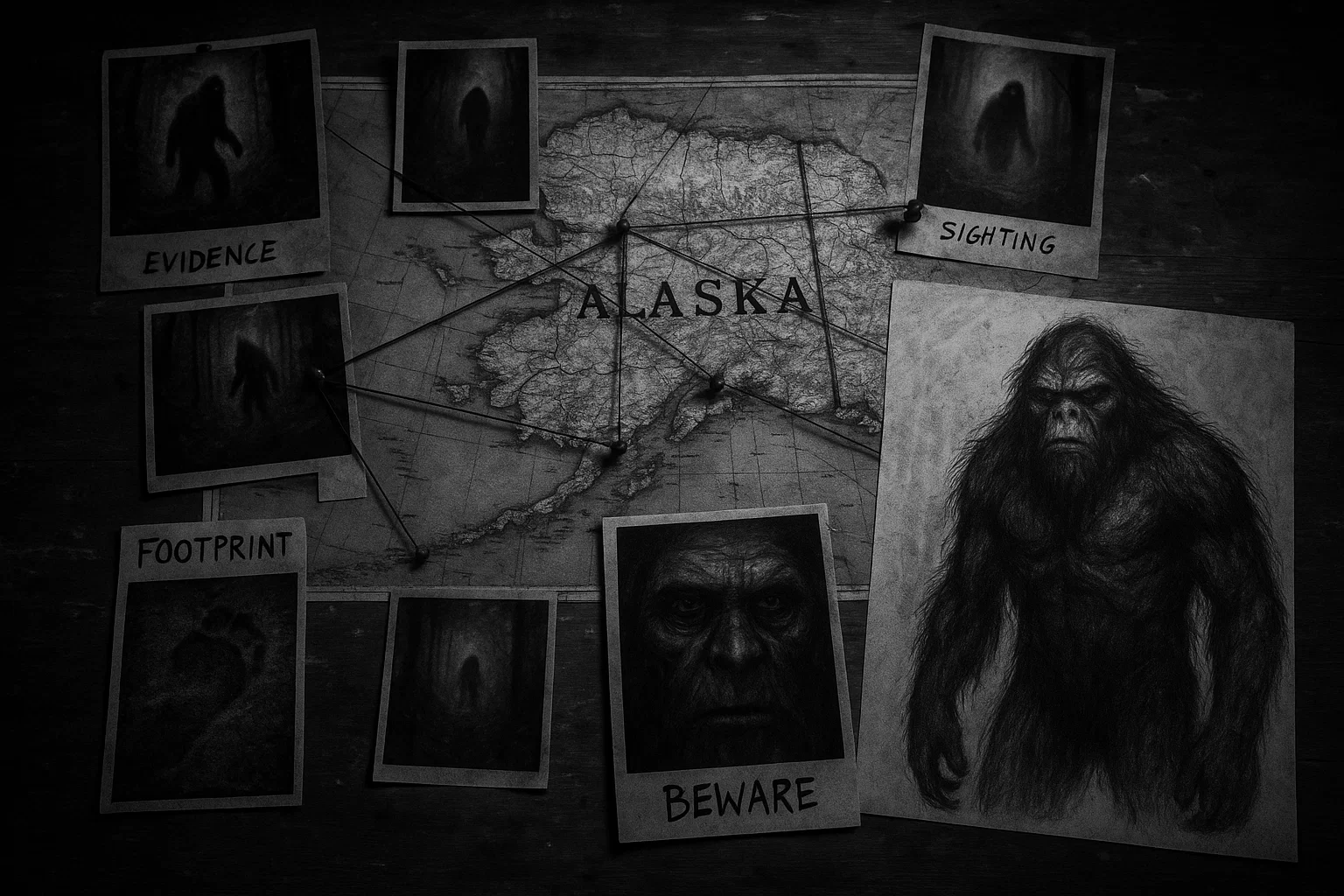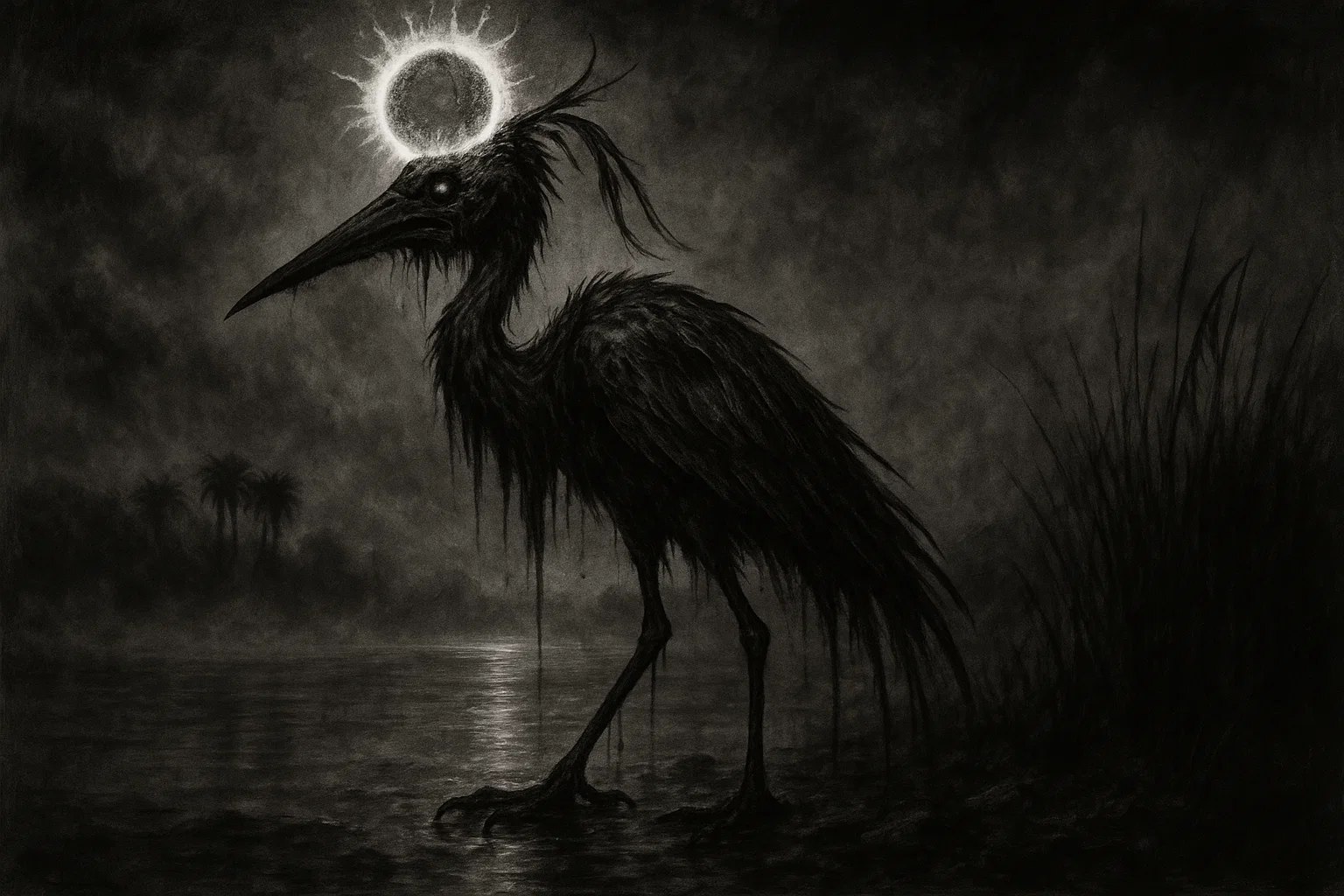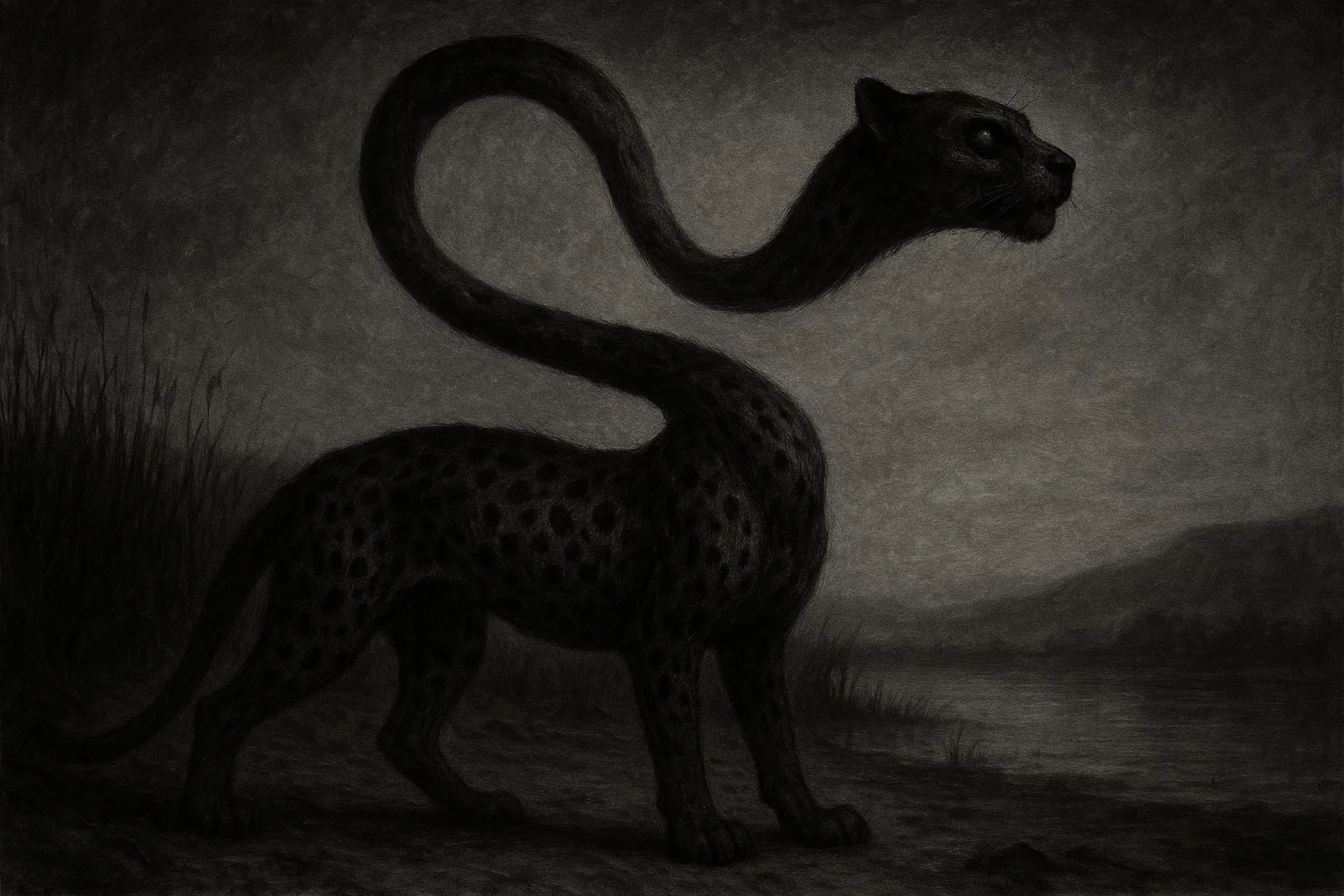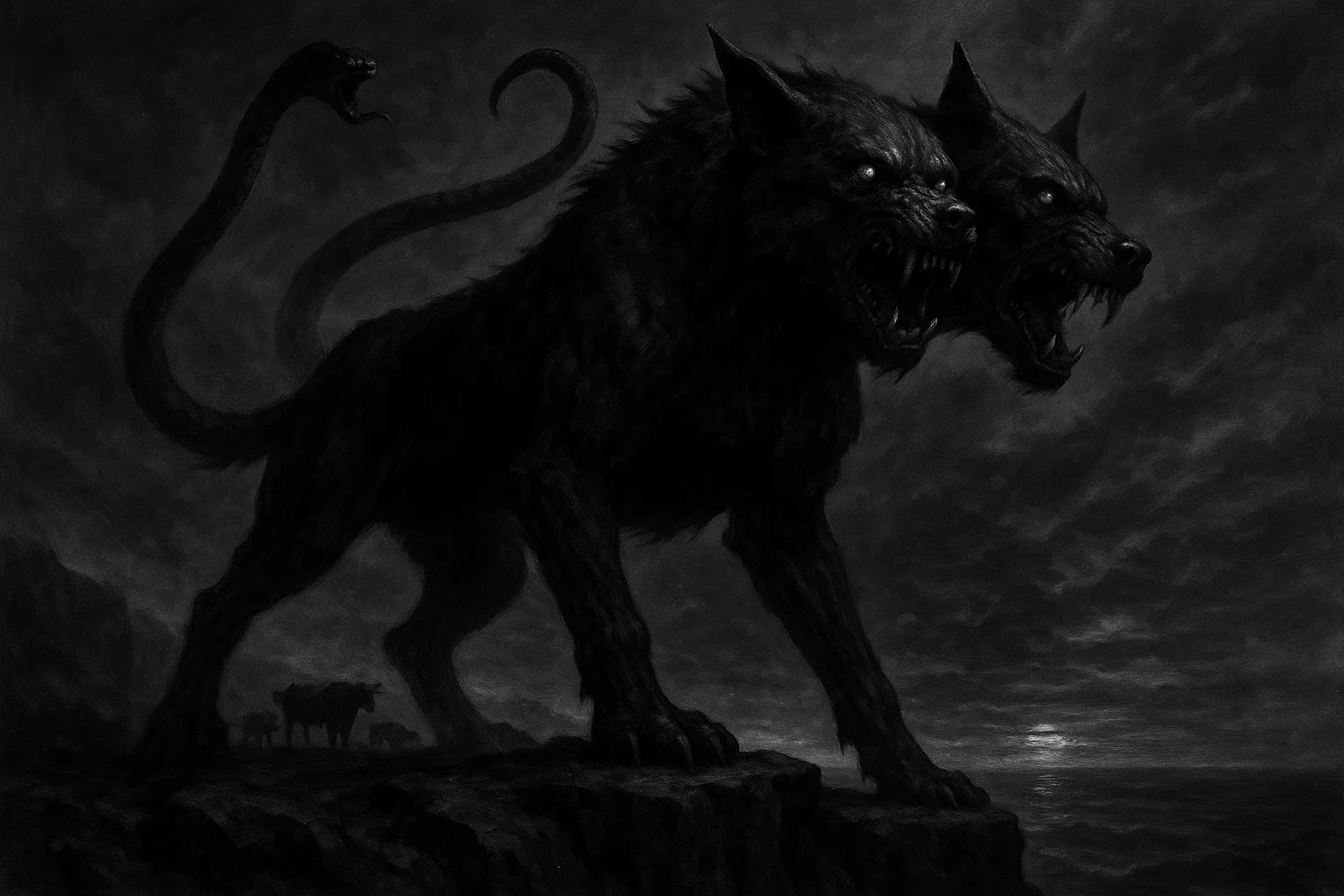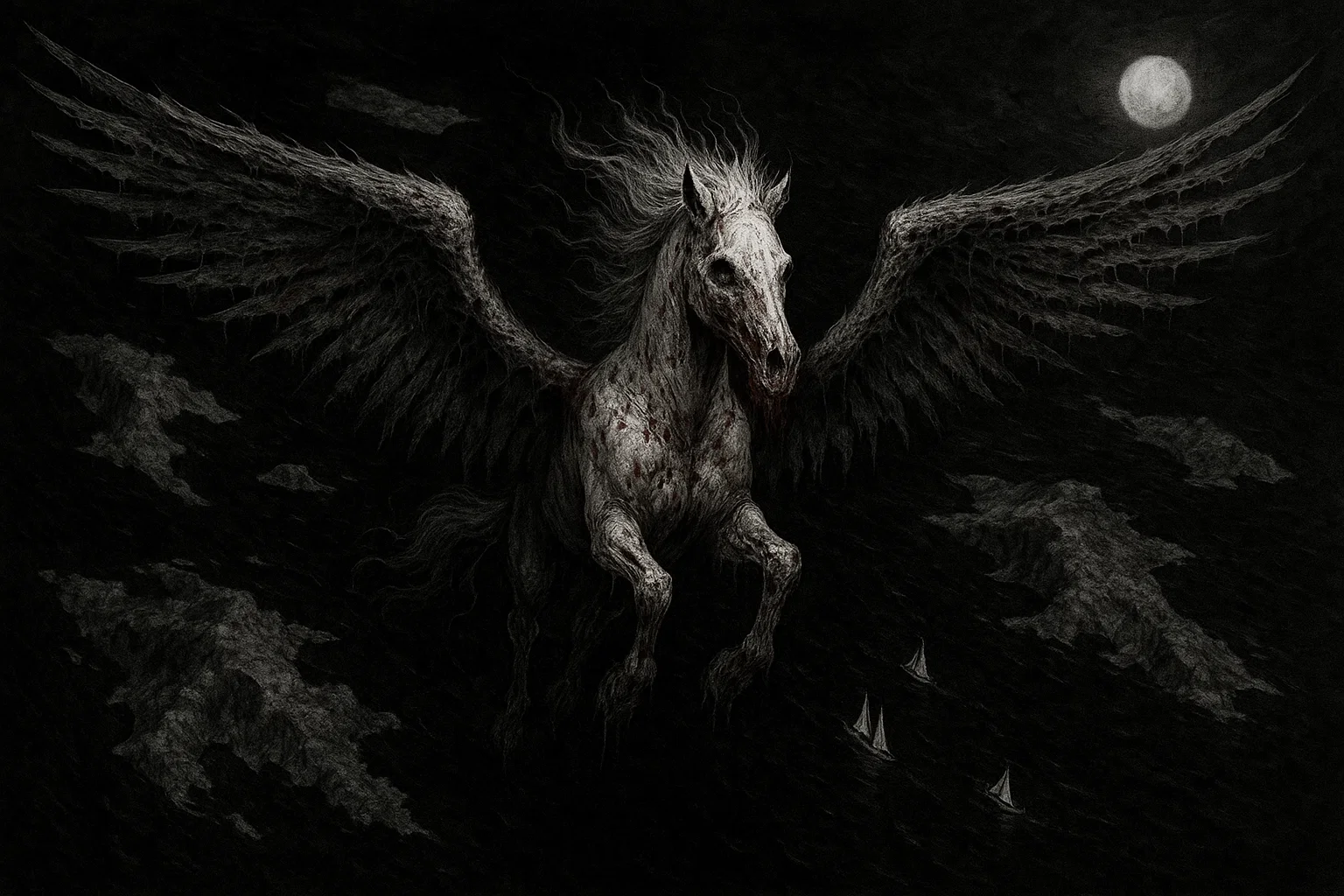Alaska’s sprawling wilderness, from the misty rainforests of the Tongass National Forest to the frozen expanses of Denali National Park, sets the stage for tales of a mysterious creature known as Bigfoot or Sasquatch.
With 22 documented Alaska Bigfoot sightings in the Bigfoot Field Researchers Organization (BFRO) database, the state harbors a rich legacy of encounters with a towering, hairy biped. Witnesses describe a creature standing 7–12 feet tall, cloaked in dark or reddish fur, often emitting a pungent odor or eerie vocalizations like whoops, howls, or screams.
From fleeting glimpses on remote highways to chilling encounters near glaciers, these sightings, spanning 1985 to 2022, weave a tapestry of intrigue across boroughs like Fairbanks, Southeast Fairbanks, and Prince of Wales. Iconic cases, such as a trucker’s 2012 sighting between Anchorage and Fairbanks and Joe Morris’s 2022 encounter near the Root Glacier, have fueled both fascination and skepticism.
Summary
Alaska Bigfoot Sightings
The table below compiles all 22 documented Alaska Bigfoot sightings:
| Date | Witness | Location | Description |
|---|---|---|---|
| November 1985 | Hiker | Near Hope, Kenai-Cook Inlet | Saw 7-foot creature with dark fur on trail, fled into forest, no tracks. |
| January 1988 | Special Forces A Team | Near Delta Junction, Southeast Fairbanks | Followed 15-inch bipedal tracks, heard loud screams, no visual sighting. |
| September 1998 | Hunter | Near Kalskag, Bethel | Saw 7-foot creature with dark fur near river, left 15-inch tracks in mud. |
| September 1998 | Fisherman | Near Kalskag, Bethel | Heard whoops, saw 7.5-foot figure near riverbank, left broken branches. |
| June 2000 | Hiker | Near McCarthy, Cordova-McCarthy | Saw 7-foot creature with dark fur on trail, heard wood knocks, no tracks. |
| September 2000 | Camper | Near Palmer, Matanuska-Susitna | Saw 7.5-foot creature near campsite, smelled musky odor, left crushed grass. |
| September 2000 | Motorist | Near Wasilla, Matanuska-Susitna | Saw 7-foot figure cross road at night, illuminated by headlights. |
| February 2004 | Resident | Near Fairbanks, Fairbanks | Saw 7.5-foot creature in backyard, no tracks reported. |
| February 2004 | Camper | Near Hydaburg, Prince of Wales | Heard screams, saw 7-foot figure near campsite, left broken branches. |
| February 2004 | Hiker | Near Klawock, Prince of Wales | Saw 7.5-foot creature with reddish fur on trail, heard low growl. |
| July 2004 | Fisherman | Near Dillingham, Bristol Bay | Saw 8-foot creature near river, left 14-inch tracks, smelled musky. |
| February 2004 | Motorist | Near Anchorage, Anchorage | Saw 7-foot figure cross road at dusk, no tracks reported. |
| August 2008 | Hunter | Near Tok, Southeast Fairbanks | Saw 8-foot creature with dark fur in woods, left 15-inch tracks. |
| August 2008 | Camper | Near Delta Junction, Southeast Fairbanks | Heard whoops, saw 7.5-foot figure near campsite, left crushed grass. |
| July 2009 | Resident | Near Fairbanks, Fairbanks | Saw 7-foot creature near home, heard low growl, no tracks reported. |
| July 2009 | Hiker | Near Fairbanks, Fairbanks | Saw 7.5-foot creature on trail, left 14-inch tracks in mud. |
| July 2009 | Motorist | Near Fairbanks, Fairbanks | Saw 7-foot figure cross road at night, illuminated by headlights. |
| July 2009 | Camper | Near Fairbanks, Fairbanks | Heard screams, saw 7.5-foot figure near campsite, left broken branches. |
| May 2011 | Camper (putua76) | Near Ketchikan, Prince of Wales | Saw 7-foot creature on logging road, captured shaky video, moved fast. |
| 2012 | Trucker (Tim) | Between Anchorage and Fairbanks, Fairbanks | Saw 8-foot creature on road side, ran into woods when approached. |
| 2018 | Joe Morris | Near Root Glacier, Valdez-Chitina-Whittier | Saw 7-foot human-like creature while driving, no tracks reported. |
| May 2022 | Joe Morris | Near Root Glacier, Valdez-Chitina-Whittier | Saw 12-foot creature on trail, estimated 2,500–3,000 pounds, dark fur. |
Hotspot Habitats
Alaska Bigfoot sightings thrive in the state’s remote, forested regions, where dense vegetation, rugged terrain, and abundant water sources create ideal conditions for an elusive creature.
Fairbanks Borough, with 5 sightings, encompasses vast boreal forests and taiga, with areas like the Chena River providing cover and resources.
Southeast Fairbanks, with 3 sightings, includes the Tanana Valley’s spruce and birch woodlands, ideal for concealment.
Prince of Wales Borough, also with 3 sightings, features the Tongass National Forest’s temperate rainforest, with dense hemlock, cedar, and coastal streams, as seen in the 2011 Ketchikan sighting.
Valdez-Chitina-Whittier, with 2 sightings, includes the Chugach National Forest and Root Glacier, offering glacial valleys and thick underbrush.
Bethel Borough’s tundra and riverine areas, noted in 1998 sightings, support sightings near remote waterways.
These regions, with their biodiverse ecosystems, remote trails, and minimal human presence, align with the Sasquatch’s reported preference for isolation, making Alaska’s wilderness a prime habitat for Bigfoot sightings.
You May Also Like: Complete Guide to Arizona Bigfoot Sightings (1942-2025)
Reported Physical Characteristics
Witnesses across Alaska Bigfoot sightings describe the Sasquatch as a bipedal primate, standing 7–12 feet tall, with a muscular, broad-shouldered build and long arms extending past the knees.
Hair color varies, with dark brown (May 2011, Prince of Wales), reddish-brown (February 2004, Prince of Wales), and black (2012, Fairbanks) reported.
A conical or domed head, often with no visible neck, is common, as in the May 2022 Valdez-Chitina-Whittier sighting. Glowing eyes, red or yellow, appear in nocturnal sightings like July 2009 (Fairbanks), creating an eerie effect. A musky, skunk-like odor is frequently noted, as in July 2004 (Bristol Bay) and September 2000 (Matanuska-Susitna).
Vocalizations include whoops (August 2008, Southeast Fairbanks), howls (July 2009, Fairbanks), screams (February 2004, Prince of Wales), and wood knocks (June 2000, Cordova-McCarthy), suggesting communication or territorial behavior.
Physical evidence includes 14–15-inch footprints (September 1998, Bethel; August 2008, Southeast Fairbanks), broken branches (September 1998, Bethel), and crushed grass (September 2000, Matanuska-Susitna), indicating a powerful, agile creature adept at navigating Alaska’s rugged terrain.
Investigation Efforts in Alaska
Alaska Bigfoot sightings have sparked dedicated investigative efforts, despite the state’s challenging terrain, positioning it as a unique frontier for cryptozoological research.
The BFRO, a leading authority, has documented 22 sightings, conducting field expeditions in boroughs like Fairbanks, Southeast Fairbanks, and Prince of Wales to verify reports. Investigators, including Matt Moneymaker and regional volunteers, have focused on collecting physical evidence such as plaster casts of footprints, as seen in the September 1998 Bethel sighting, which revealed 15-inch tracks with dermal ridges.
The Alaska Bigfoot Research Group, a local organization, collaborates with Native communities and outdoorsmen, archiving witness testimonies and photographic evidence, such as the shaky video from the May 2011 Ketchikan sighting. Thermal imaging and night-vision goggles, deployed in expeditions post-2011 in the Tongass National Forest, have captured blurred shapes, possibly indicating the creature’s stealthy movements.
Trail cameras, installed in the Chugach National Forest since 2018, have recorded indistinct figures, often obscured by dense foliage, as in a 2022 Valdez-Chitina-Whittier attempt.
Hair samples, collected from a 2004 Prince of Wales sighting, underwent DNA analysis at a university lab, ruling out human or bear origins but yielding inconclusive results due to degradation. Audio recorders have captured whoops, howls, and wood knocks, notably in the August 2008 Southeast Fairbanks sighting, suggesting vocal communication.
Drone surveys, implemented since 2020 in the Tanana Valley, aim to cover vast terrains, though dense canopies, rocky outcrops, and harsh weather limit visibility.
Tlingit and Haida tribal members have shared oral histories of a “hairy man” or Kushtaka, a shape-shifting creature, complementing modern Alaska Bigfoot sightings. For example, a Tlingit elder recounted a 19th-century tale of a towering figure stealing salmon from nets near Ketchikan, mirroring the 2011 sighting. Plaster casts, such as those from the July 2004 Bristol Bay sighting (14 inches long), show consistent toe structure and are stored by local researchers for study.
Challenges in investigating Alaska Bigfoot sightings include dense vegetation, which obscures tracks, as in the June 2000 Cordova-McCarthy sighting, and extreme weather, such as snow or rain, which erodes footprints in areas like Fairbanks.
Witness reluctance, driven by fear of ridicule, often delays reporting, as seen in the February 2004 Anchorage sighting, where the witness waited months to share their account. Remote terrain and limited access to areas like the Root Glacier complicate timely investigations.
Despite these hurdles, the consistency of physical evidence—casts, hair samples, and recordings—and detailed accounts sustain Alaska’s role as a Bigfoot research hub.
Community efforts, such as the Alaska Bigfoot Research Group’s annual expeditions and public workshops, engage locals, hunters, and tribal members, fostering a collaborative approach to unraveling the Sasquatch mystery.
You May Also Like: Complete Guilde to Arkansas Bigfoot Sightings (1846-2025)
Detailed Case Study: 2012 Trucker’s Sighting Between Anchorage and Fairbanks
In early 2012, at approximately 3:00 AM, a trucker known as Tim (pseudonym to protect privacy) was driving a freight truck along the Parks Highway between Anchorage and Fairbanks in Fairbanks Borough (approximate coordinates: 64.837, -147.716). The night was clear but cold, with temperatures around 10°F and a faint moonlight illuminating the snow-dusted boreal forest.
As Tim navigated a remote stretch, his headlights caught a large, dark figure standing on the right side of the road, about 30 yards away. He slowed the truck, initially thinking it was a bear, but the figure stood upright, revealing a 7.5–8-foot-tall creature with thick, dark brown fur covering its body. Its broad shoulders, conical head, and long arms gave it a humanoid silhouette, with no visible neck and a muscular build.
The creature turned, its yellowish eyes reflecting the headlights, and stared at Tim for 3–4 seconds before pivoting and sprinting into the dense spruce and birch forest with startling agility, covering 10–12 feet per stride. The sighting lasted 10–12 seconds, leaving Tim shaken and exhilarated. No odor was noted, likely due to the enclosed cab, and no vocalizations were heard over the truck’s engine.
The creature’s swift retreat and camouflaged fur blended seamlessly with the forest, making this one of the most vivid Alaska Bigfoot sightings.
Witness Background
Tim, a 45-year-old trucker with over 15 years of experience on Alaska’s highways, was well-versed in the region’s wildlife, including bears, moose, and wolves. Based in Anchorage, he frequently drove the 360-mile route to Fairbanks, navigating remote stretches with minimal traffic. Initially skeptical of Bigfoot,
Tim had dismissed local stories as folklore, but this encounter changed his perspective. He described the creature as “unlike any animal I’ve seen,” emphasizing its bipedal posture and human-like gaze. Tim shared the experience with a friend, who posted it on an online forum in 2012, where it garnered significant attention.
His reluctance to report publicly, fearing ridicule from fellow truckers, underscores the stigma surrounding Bigfoot sightings, yet his detailed account, including the creature’s eye shine and rapid movement, adds credibility. Tim’s familiarity with the Parks Highway and his no-nonsense demeanor as a seasoned driver bolster the reliability of his testimony.
Investigation and Findings
No formal BFRO investigation was conducted for Tim’s 2012 sighting, likely due to its informal reporting through an online forum rather than direct submission. However, the Alaska Bigfoot Research Group reviewed the account, noting its consistency with other Fairbanks Borough sightings, such as a 2009 backyard encounter.
The Parks Highway, a remote corridor flanked by boreal forest, aligns with Bigfoot’s reported preference for secluded areas, as seen in five other Fairbanks reports. Researchers attempted a site visit in spring 2012, but the snow-covered ground and time delay prevented finding footprints or hair samples.
The group noted the area’s dense spruce and birch, ideal for concealment, and its proximity to the Chena River, a potential water source. Online discussions highlighted skepticism, with some suggesting the figure was a bear standing upright, but Tim’s description of the creature’s bipedal sprint and humanoid features countered this, aligning with Class A sightings like the 2009 Fairbanks report.
The lack of physical evidence, common in Alaska Bigfoot sightings, limited conclusions, but Tim’s credibility as a seasoned trucker and the sighting’s nocturnal clarity make it a significant case.
You May Also Like: Complete Guilde to California Bigfoot Sightings (1886-2025)
Detailed Case Study: Joe Morris’s 2022 Sighting Near Root Glacier
On May 15, 2022, at approximately 2:00 PM, Joe Morris, a lodge worker, was hiking a trail near the Root Glacier in the Valdez-Chitina-Whittier area of Chugach National Forest (coordinates: 61.254, -145.927). The day was overcast, with temperatures around 50°F and a light drizzle, creating a misty atmosphere in the glacial valley.
While navigating a rocky trail flanked by alder thickets and spruce trees, Joe spotted a massive figure about 100 yards away, moving parallel to the trail. The creature stood 11–12 feet tall, with dark, matted fur covering its muscular frame, estimated to weigh 2,500–3,000 pounds.
Its conical head, broad shoulders, and long arms gave it a gorilla-like silhouette, with no visible neck and a slight hunch. The creature moved with a deliberate, powerful stride, covering 12–15 feet per step, pausing briefly to grasp a sapling, which it snapped effortlessly. Joe, frozen in awe and fear, watched for 20–25 seconds as the creature glanced in his direction, its dark eyes briefly meeting his, before it turned and vanished into the dense forest.
No odor was noted, likely due to the drizzle and wind, but Joe heard a low, guttural growl as it retreated, marking this as a standout in Alaska Bigfoot sightings.
Witness Background
Joe Morris, a 38-year-old Alaskan resident and seasonal worker at a remote lodge near McCarthy, was an experienced outdoorsman with extensive knowledge of the Chugach National Forest. Having grown up hunting and hiking in Alaska, Joe was familiar with bears, moose, and other wildlife, making his account particularly credible.
This was his second Bigfoot sighting, following a 2018 encounter near the same glacier where he saw a 7-foot, human-like creature. Joe shared both experiences on the Bigfoot Eyewitness Radio podcast in 2023, providing vivid details of the creature’s size, movement, and behavior. Initially cautious about Bigfoot lore, Joe became a firm believer after his encounters, noting the 2022 creature’s immense bulk and primate-like features as unlike any known animal.
His willingness to share publicly, despite potential skepticism, and his detailed descriptions, including the growl and snapped sapling, lend weight to his testimony.
Investigation and Findings
The BFRO classified Joe’s 2022 sighting as Class A, reflecting its daylight clarity and detailed observation. A local investigator from the Alaska Bigfoot Research Group conducted a site visit on June 10, 2022, interviewing Joe in person and examining the trail near the Root Glacier. The investigator found a snapped sapling, approximately 3 inches in diameter, at the reported location, consistent with Joe’s account of the creature’s strength.
No footprints were found due to the rocky terrain and recent rain, but the area’s dense alder and spruce provided ample cover, aligning with Bigfoot’s reported habitat preferences. The investigator noted the trail’s proximity to the Kennicott River, a potential water source, mirroring patterns in other Valdez-Chitina-Whittier sightings, like a 2018 report.
Skeptics suggested the figure was a large bear, but Joe’s description of the creature’s bipedal stride and humanoid features countered this, supported by his prior 2018 sighting. The growl and physical evidence of the sapling added credibility, though the lack of tracks or hair limited conclusive findings. Joe’s account, shared on a podcast, has been widely discussed, making it a pivotal case in Alaska Bigfoot sightings.
You May Also Like: Complete Guilde to Colorado Bigfoot Sightings (1886–2025)
Conclusion
With 22 documented Alaska Bigfoot sightings, the state’s vast wilderness—from the Tongass National Forest to the Chugach Mountains—pulses with tales of the Sasquatch.
The 2012 trucker’s sighting on the Parks Highway and Joe Morris’s 2022 encounter near the Root Glacier, with their vivid details and credible witnesses, highlight the phenomenon’s depth. Supported by plaster casts, vocalization recordings, and tribal narratives like the Tlingit Kushtaka, investigations by the BFRO and local groups continue to probe these mysteries.
While definitive proof remains elusive, Alaska’s Bigfoot legacy thrives, beckoning adventurers to explore its untamed landscapes for answers to the Sasquatch enigma.

